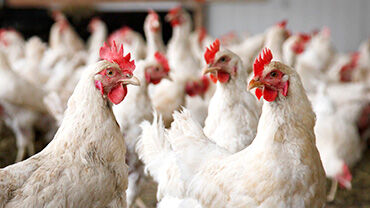Influenza A(H7N9) virus in China - implications for public health - 7th update, 3 July 2017
Since the notification of a novel reassortant influenza A(H7N9) virus on 31 March 2013, 1 548 laboratory-confirmed cases of human infection with avian influenza A(H7N9) virus have been reported. This is the fifth winter season in the northern hemisphere with human cases caused by A(H7N9) infections.
Executive summary
Since the notification of a novel reassortant influenza A(H7N9) virus on 31 March 2013, 1 548 laboratory-confirmed cases of human infection with avian influenza A(H7N9) virus have been reported. This is the fifth winter season in the northern hemisphere with human cases caused by A(H7N9) infections. During this wave, the number of human cases has been higher than in previous waves and accounts for 48% of the human cases reported so far. The higher number of cases is most likely due to greater environmental contamination in live bird markets and increased circulation of the virus among poultry. In contrast to the situation observed during the summer months in previous years, A(H7N9) viruses are continuously circulating in the poultry population, with transmission to humans causing a substantial number of cases.
In February 2017, a new A(H7N9) virus with mutations in the haemagglutinin gene, indicating a change to high pathogenicity in poultry, was reported. This new variant virus has been detected in 25 of the 750 human cases in the current epidemic wave, but the cases were regionally restricted to three Provinces in China and did not show changes in severity.
Highly pathogenic avian influenza (HPAI) and low pathogenic avian influenza (LPAI) A(H7N9) viruses co-circulate in the bird population. Although the genetic changes in HPAI viruses may have implications in terms of pathogenicity, surveillance and control strategies for poultry, there is no evidence of increased transmissibility to humans or among humans to date. Data show that the newly emerged HPAI as well as some of the currently circulating LPAI viruses are genetically and antigenically distinct from current A(H7N9) candidate vaccine viruses. To address this, WHO has proposed new A(H7N9) candidate vaccine viruses. Timely characterisation of A(H7N9) viruses and sharing of sequence information remains key for A(H7N9) vaccine virus development.
HPAI A(H7N9) viruses from human cases have been found to have mutations associated with reduced susceptibility to neuraminidase inhibitors. Those mutations may have emerged during antiviral treatment. The proportion of viruses with reduced susceptibility to neuraminidase inhibitors has remained constant during the five recent epidemic waves.
The continued transmission of A(H7N9) to humans in China poses the risk that sporadic travel-related cases returning from China may be detected in Europe.
Options for prevention and control
The options for prevention and control of the infection outlined in the previous Rapid Risk Assessment remain valid:
• People travelling to China should avoid direct exposure to poultry and refrain from visiting live poultry markets or backyard farms.
• Travellers who have visited affected areas should be made aware that if they develop respiratory symptoms and fever upon their return, they should consult a physician and mention their recent travel history to enable early diagnosis and treatment.
In addition, travellers who have visited affected areas should avoid visiting farms after their return from affected areas in China for the entire duration of the 10-day incubation period (and during the symptomatic period in the event that they develop symptoms) in order to prevent a possible virus introduction to poultry in the EU.
It cannot be excluded that humans infected with A(H7N9) return to the EU/EEA and introduce the virus. However, the risk of the disease spreading in Europe via humans is still considered low, as there is no evidence of sustained human-to-human transmission.
EU/EEA Member States and the European Commission should consider relevant options – in terms of preparedness and communication – if sustained human-to-human transmission develops. Such options can include, but are not limited to the:
• development of plans for the identification, testing and follow-up of possible human cases
• continuation of influenza surveillance in poultry and wild birds for avian influenza viruses
• sensitisation of healthcare systems and confirmation of available surge capacity at healthcare facilities
• review of arrangements for delivery of relevant prevention and treatment measures.
Public health authorities need to maintain awareness of the virological and epidemiological features of the current A(H7N9) epidemic, including evidence from monitoring of transmission, severity, virus receptor binding and antiviral susceptibility properties.
Download






